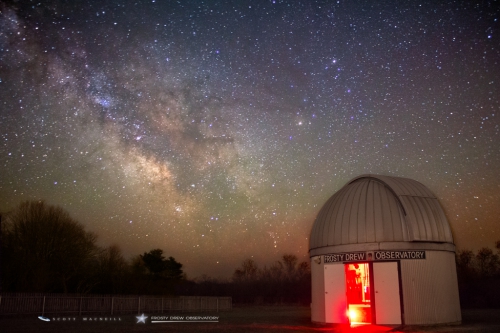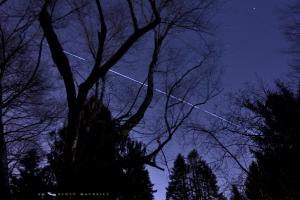
Stargazing Nights - CLOSED
- Where:
- Frosty Drew Observatory
- When:
- Friday March 31, 2017 - CLOSED
- Cost:
- $1 Suggested Donation per Person
Tonight is Stargazing Night and the dismal weather that we had last Friday, continues. Forecasts are calling for heavy rain, sleet, 40 mph wind gusts, and full cloud cover all night long. This is quite unfortunate since we are on the New Moon side of the lunar cycle, have a near naked eye visible comet, Jupiter is one week away from opposition (best viewing time), and the center of the Milky Way galaxy is visible in our early morning sky. Many amazing things to miss out on. With such a dismal forecast we will keep the Observatory and Sky Theatre closed tonight and will return to our regular Stargazing Nights schedule on Friday, April 7, 2017. Let’s hope the 2016 trend of dismal weather during every New Moon doesn’t crash our 2017 moments of astro-glory.
-------------------
Weekly Happenings
Scott MacNeill
On Friday, April 7, 2017 Earth will arrive at the point in our orbit where Jupiter is on the opposite side of Earth than the Sun. We call this “opposition” and it brings the best viewing periods of Jupiter for the year. During opposition, Jupiter will be visible all night long with rise times happening around sunset and set times around sunrise. The days around opposition will also be when Jupiter is closest to Earth. For 2017, Jupiter will be at its closest to Earth, for our year, on April 8th - one day past opposition. This year we have an added bonus. The Full Pink Moon will be in conjunction with Jupiter, sitting about 2° to the east (left) of Jupiter on April 10th, three nights past opposition. Jupiter's opposition will certainly be the focus of our Stargazing Nights event next Friday if the skies allow for viewing.
Starting last Sunday, March 26 and continuing until Saturday, April 15, the International Space Station (ISS) will visibly pass over the United States on a nightly basis, with nearly two visible passes every evening. Orbiting the Earth at near 17,500 mph at an average altitude of 250 miles, it takes the ISS about 90 minutes to complete one orbit around Earth. Seeing the ISS requires the station to be in direct sunlight while observers on the ground are in darkness (after sunset or before sunrise). When observing the ISS pass over, the bright light we see is sunlight reflecting off the station. Visit Frosty Drew Observatory for daily pass times of the ISS over the Southern New England area. Otherwise, check out NASA’s Spot the Station for pass times over your location. Catch up on the ISS, then step out and sneak a peek at humanity’s continuously inhabited space residence blazing the night sky.
-Scott


